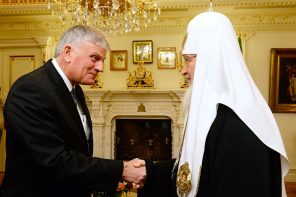The 2012 American Values Survey from Public Religion Research Institute finds yet more evidence of a phenomenon that drew a lot of attention when Pew reported it a few weeks ago: the number of religiously unaffiliated Americans is growing.
When the Pew survey came out, I noted:
Looking at the Pew survey, one wonders how long the religious right can continue to use the same battle plan. Yet, the data shows they are clearly losing the public. Another survey last week from the Public Religion Research Institute showed that while Mitt Romney has the support of 80% of younger white evangelical millennials (aged 18 to 25), this is a small and diminishing constituency: white evangelicals comprise only 12.3% of that age group. That’s less than half their proportion of the 50 to 64 population. The Pew survey showed that while 32% of Americans aged 50 to 64 are white evangelicals, only 13% of those aged 18 to 29 are.
The PRRI survey found similar trends: while white evangelicals make up 30% of those 65 and older, they make up only 9% of 18- to 29-year-olds.
Back to Pew:
The Pew survey also found there are now as many “nones” as there are white evangelicals—each makes up 19% of the US population. But the generational trends are traveling even more starkly in a non-theist direction: 32% of 18- to 29-year-olds are unaffiliated, and 42% of those describe themselves as atheist or agnostic. That’s over ten points higher than the 21% of 30- to 49-year-old “nones” who describe themselves that way, and more than twice the 15% of 50- to 64-year-old “nones” who do.
Similarly, PRRI found that those 65 and older make up just 8% of the unaffiliated, and just 12% of them identify as atheist or agnostic; on the other hand, 18- to 29-year-olds make up 35% of the unaffiliated, and 40% of them are atheist or agnostic. Just 30% of 30- to 49-year-old unaffiliateds are atheist or agnostic, and 17% of 50 to 64-year-old unaffiliateds are.
With the unaffiliateds growing, and with atheists and agnostics growing among the unaffiliated, and with decreasing numbers of white evangelicals making up younger voters, wouldn’t that mean the unaffiliated will start to dominate our politics?
It’s too early to know this, of course; while white Catholics and white mainline Protestants have lost adherents, PRRI found, white evangelicals have retained steady membership, despite losses. (PRRI calls this “churn,” meaning that some people disaffiliate, while a roughly equal percentage join.) What’s more, younger generations have higher percentages of Latinos, blacks, and non-Christians, which in part explains the younger white evangelical loss of share.
For the time being, white evangelicals and their politically-aligned religious conservatives—conservative Catholics and mainline Protestants—comprise such an overwhelmingly large segment of the Republican base that a national candidate is lost without them. White evangelicals make up 37% of Mitt Romney’s support, and white mainline Protestants and white Catholics make up 19% each. That’s two-thirds of his base coming from, essentially, religious conservatives.
On the flip side, Obama’s support comes from a more diverse group: 23% from the unaffiliated, 18% from black Protestants, 15% from white mainline Protestants, 14% from white Catholics, 8% from Latino Catholics, and 7% from non-Christians. Romney draws just 3% of his base from Latino Catholics, 2% from non-Christians, and an unmeasurable portion from black Protestants.
But here’s a cautionary note: white Catholics, who make up a bigger share of Romney’s base, are much more likely (78%) to say they will definitely vote than Latino Catholics (52%). Religiously unaffiliated Americans “tend to be less politically engaged than religiously affiliated Americans, with the exception of atheists and agnostics,” who are “significantly more likely than” other unaffiliated Americans “to say they are aboslutely certain they will vote,” according to the PRRI report.
Evangelicals are notoriously politically engaged, owing to the political and religious infrastructure (political organizations and churches) that motivate them to go vote. While they make up 20% of the general population, says PRRI CEO Robert Jones, they make up 23% of likely voters.
With the unaffiliated—and, with younger cohorts, atheists, and agnostics—becoming not only a larger slice of the voter pie, but a larger slice of the Democratic base, you would think that they’d be having a much more significant influence on issues raised in the election. But we’ve seen no discussion of church-state separation, climate change, or the role of science in public policy in the presidential campaign. The Obama campaign is still focused on highlighting the president’s religious views and friendliness to religious constituencies rather than promoting secular government.
This could change, over time. But the problem is that to win the Republican nomination, and to drive voter turnout, the GOP is still virtually entirely reliant on a massive base of religiously conservative voters.
Democrats could confront that problem by presenting themselves as the non-culture war religious party, as they’ve done for the past few election cycles; a sort of accommodationist approach to religious right demands for intertwining religion and government. Or they could take the opportunity to promote secularism and remake our politics after decades of a hostile takeover by religious conservatives. That would, no doubt, cause a mighty backlash from well-funded, well-organized religious conservatives, which is why I’m predicting culture war politics aren’t yet over. But confronting them head-on by championing secular government (which in turn secures religious freedom) has far more promise for fundamentally altering our politics.




